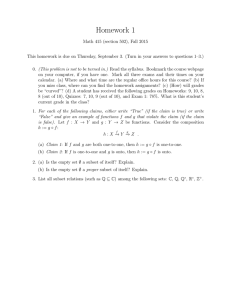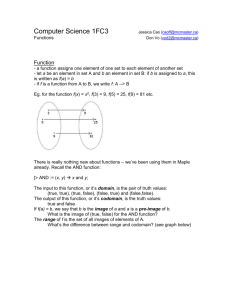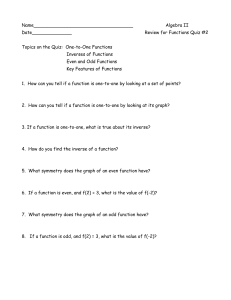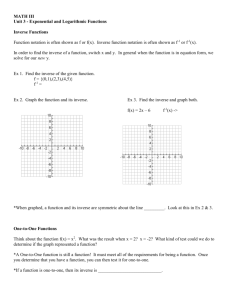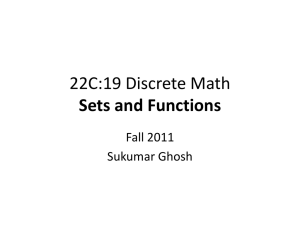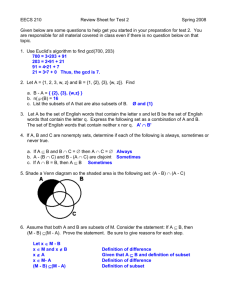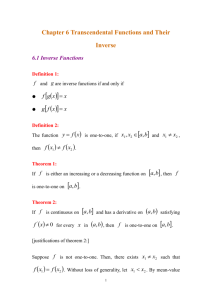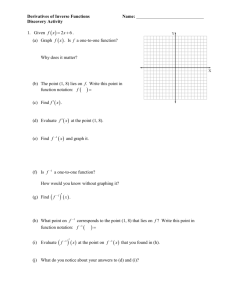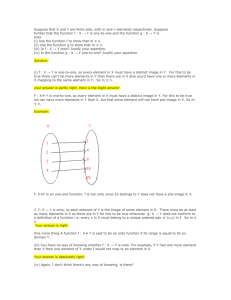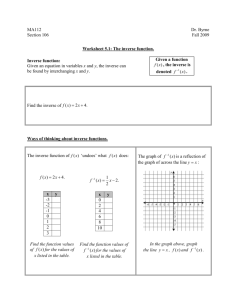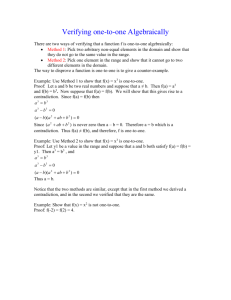03/04
advertisement
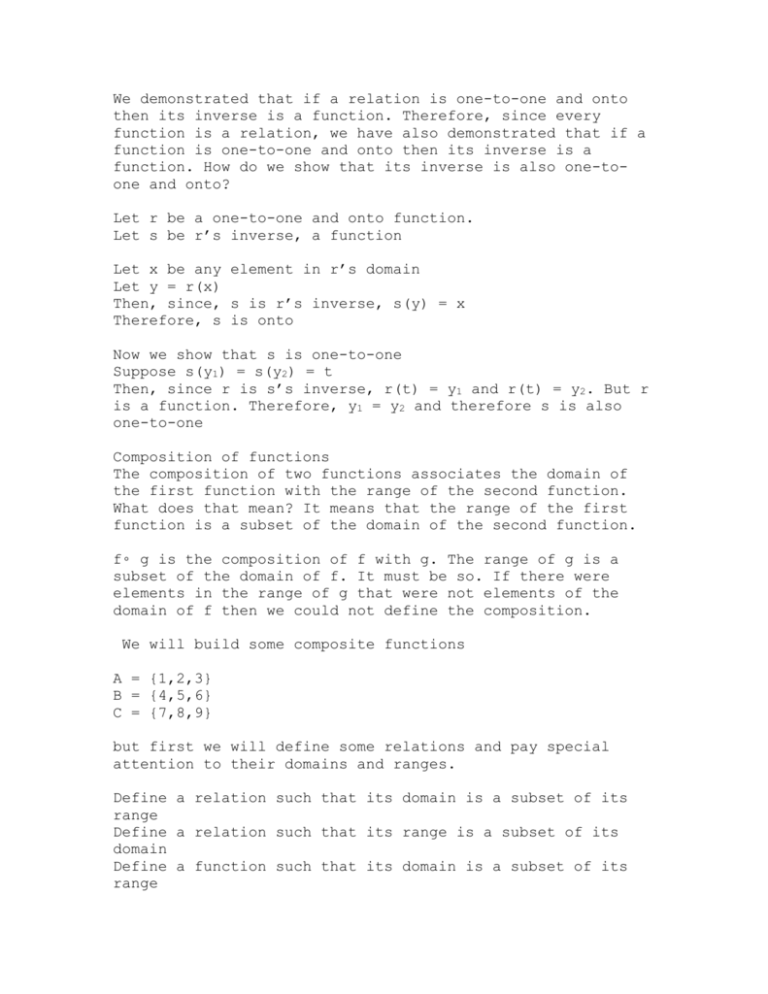
We demonstrated that if a relation is one-to-one and onto
then its inverse is a function. Therefore, since every
function is a relation, we have also demonstrated that if a
function is one-to-one and onto then its inverse is a
function. How do we show that its inverse is also one-toone and onto?
Let r be a one-to-one and onto function.
Let s be r’s inverse, a function
Let x be any element in r’s domain
Let y = r(x)
Then, since, s is r’s inverse, s(y) = x
Therefore, s is onto
Now we show that s is one-to-one
Suppose s(y1) = s(y2) = t
Then, since r is s’s inverse, r(t) = y1 and r(t) = y2. But r
is a function. Therefore, y1 = y2 and therefore s is also
one-to-one
Composition of functions
The composition of two functions associates the domain of
the first function with the range of the second function.
What does that mean? It means that the range of the first
function is a subset of the domain of the second function.
f◦ g is the composition of f with g. The range of g is a
subset of the domain of f. It must be so. If there were
elements in the range of g that were not elements of the
domain of f then we could not define the composition.
We will build some composite functions
A = {1,2,3}
B = {4,5,6}
C = {7,8,9}
but first we will define some relations and pay special
attention to their domains and ranges.
Define a relation such that its domain is a subset of its
range
Define a relation such that its range is a subset of its
domain
Define a function such that its domain is a subset of its
range
Define a function such that its range is a subset of its
domain
What is the composition of f and f-1?
f = {(1,5), (2,6), (3,4)}
f-1 = {(5,1), (6,2), (4,3)}
f f-1 = ?
f-1f = ?
Define f:A->B
Define g:B->C
Define f g:C->A
Define g f:A->C
A x B = {(1,4), (1,5), (1,6), (2,4), (2,5), (2,6), (3,4),
(3,5), (3,6)}
B x C = {(4,7), (4,8), (4,9), (5,7), (5,8), (5,9), (6,7),
(6,8), (6,9)}
A x C = {(1,7), (1,8), (1,9), (2,7), (2,8), (2,9), (3,7),
(3,8), (3,9)}
C x A = {(7,1), (7,2), (7,3), (8,1), (8,2), (8,3), (9,1),
(9,2), (9,3)}
f
g
f
g
=
=
{(1,4), (2,5), (3,6)} Is f one to one? Is f onto?
{(4,7), (5,8), (6,9)} = Is g one to one? Is g onto?
g = ?
f = ?
A composition rule
Consider the composition f g. The composition exists if
and only if the range of g is a subset of the domain of f.
Why?
By the composition rule, f g is impossible!
g f = {(1,7), (2,8), (3,9)}
Is g f a subset of A x C?
Let A = (0,1,2)
Let B = (3,4,5,6)
Let C = (7,8,9}
Can
Can
Can
Can
we
we
we
we
define
define
define
define
a one-to-one function
an onto function from
a one-to-one function
an onto function from
from
A to
from
B to
A to B?
B?
B to C?
C?
Traditional Composition
Let f:Z ->Z:f(x) = x + 1
Let g:Z ->Z:g(x) = 3x
f g(x) = f(3x) = 3x + 1 Why?
g f(x) = g(x + 1) = 3(x + 1) 3x + 3
f f(x) = f(x + 1) = (x + 1) + 1 = x + 2
f3(x) = fff(x) = ff(x + 1) = f(x + 2) = x + 3
g2(x) = gg(x) = g(3x) = 9x
g3(x) = ggg(x) = gg(3x) = g(9x) = 27x
What is fn(x)?
What is gn(x)?
